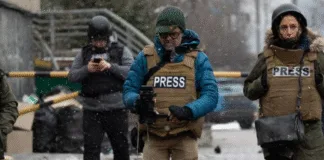The celebrations fade as Gazans return to devastation and Israel counts its dead in the first test of Trump’s peace plan
3 Narratives News | October 11, 2025
After a night of music in Tel Aviv and prayers in Rafah, morning arrives with sirens, dust, and lists of names. The ceasefire holds, the reckoning begins.
Context
Donald Trump’s twenty-point proposal, unveiled September 29, promised a ceasefire, a timed exchange of hostages and prisoners within seventy-two hours of Israeli redeployment, and a transition to a new governing structure for Gaza. Newsrooms documented celebrations across Gaza and Israel as the first phase took effect, while emphasizing the plan’s unresolved details and risks. Reuters reported that the deal calls for the release of twenty Israeli hostages and roughly 1,950 Palestinian prisoners, and that timelines and enforcement remain fragile; The Washington Post noted that key questions still surround governance and security; Associated Press confirmed the Israeli cabinet’s approval of the ceasefire outline.
Palestine: The Return to Ruins
They cross checkpoints with children on their hips and bedding on their backs. Northern streets open into fields of concrete, balconies lying in the road like fallen scaffolds. Power is scarce, hospitals lean on generators, and water queues curl around shattered blocks. Reporters on the ground describe people picking through debris for documents and clothes, then moving again when a wall shifts or a shell casing glints. Reuters describes long columns of returnees and aid convoys forming at crossings. The ceasefire, for many, is not relief; it is a pause in the noise, a chance to see what is gone and what might be rebuilt.
Inside this worldview, the calculation is simple. Home is presence, not geometry, and the map has been erased. Volunteers reopen classrooms to shelter families, mothers sweep dust from floors that are no longer floors, and boys kick at a football that keeps rolling into holes where bedrooms used to be. Calm exists, but it is thin; it tears when the wind shifts.
Israel: Closure Without Relief
On the first morning of peace, families gather at bases and hospitals with photographs and small bags of clothes. Officials say roughly twenty hostages are expected to return alive, with the remainder to be returned as remains under the agreement, while nearly two thousand Palestinian prisoners are to be released. Reuters and The Guardian outline the exchange figures and the political heat that follows. Yellow ribbons still hang from trees near Ben Gurion, and in living rooms, the television stays on low. Relief sits beside grief, and neither yields.
Inside this worldview, the exchange is not arithmetic; it is an oath kept, and a wound left open. The state brings everyone home, living and dead, and families steel themselves for reunions that will be quiet, formal, and final. In the Knesset, supporters call the deal a necessary bridge to stability; critics call it a price paid under duress. Across the country, people speak softly, as if the calm might hear them and break.
The Silent Story: Who Governs Peace
Beneath celebration and mourning is an experiment in control. The plan describes a Gaza International Transitional Authority, a technocratic body to manage services, reconstruction, and policing through an international Board of Peace. Reporting names Donald Trump as chair and notes Tony Blair as a proposed figure in the oversight architecture, a point of controversy after Hamas figures publicly said he is not welcome in a postwar role. See The Washington Post for open questions on timing and powers, Reuters for the plan’s components, and Sky News on Hamas’s stance toward Blair.
Security is slated to begin outside and edge inward. U.S. officials have described a civil-military coordination center to support stabilization, while newsrooms report that a multinational presence, drawn from Arab partners and allies, would monitor the ceasefire and supervise disarmament. Americans say combat troops are not intended to deploy inside Gaza. See Reuters on the coordination cell concept and first phase timing, and Reuters on the seventy-two-hour window tied to military redeployment. Implementation, not drafting, is where plans are tested.
Inside this layer, the unseen forces matter most: supply chains, customs lanes, fuel allotments, payroll for medics and waste collectors, the speed of permits, the patience of border guards. The structure can succeed only if it arrives faster than despair.
Key Takeaways
- Gazans are returning to flattened neighbourhoods, scarce power, and long water lines, as aid corridors open and assessment teams fan out (Reuters).
- Israel prepares for a mixed exchange, roughly twenty hostages expected alive, many others returned as remains, while about 1,950 Palestinian prisoners are slated for release (Reuters).
- Governance is set to shift to a transitional authority under an international Board of Peace, with Tony Blair’s involvement publicly contested by Hamas (Sky News).
- Security oversight is expected to start through a coordination hub and a multinational presence, with U.S. combat troops not intended to enter Gaza (Reuters).
- The exchange timetable links releases to Israeli redeployment, with a seventy-two-hour window as of the agreement’s first phase (Reuters).
Questions This Article Answers
- When do releases occur? Within seventy-two hours of Israeli redeployment under the first phase terms reported by Reuters.
- Who governs Gaza during reconstruction? A technocratic transitional authority under an international oversight board, with Hamas excluded from governance, per Reuters and the Washington Post.
- What is Tony Blair’s role? A proposed figure within the oversight architecture, publicly rejected by Hamas, per Sky News and the Guardian.
- Who manages security and weapons collection? A multinational presence and a civil-military coordination center, with U.S. officials saying combat troops are not intended to deploy inside Gaza, per Reuters.
- What remains uncertain as of October 11, 2025? The exact handover timetable, enforcement mechanisms for disarmament, and the composition and authorities of the transitional cabinet, per the Washington Post’s latest primer.
Related Reading, Hope at Last, What Israel and Palestine Have to Celebrate | Cobalt Mining and the Cost of Clean Energy
